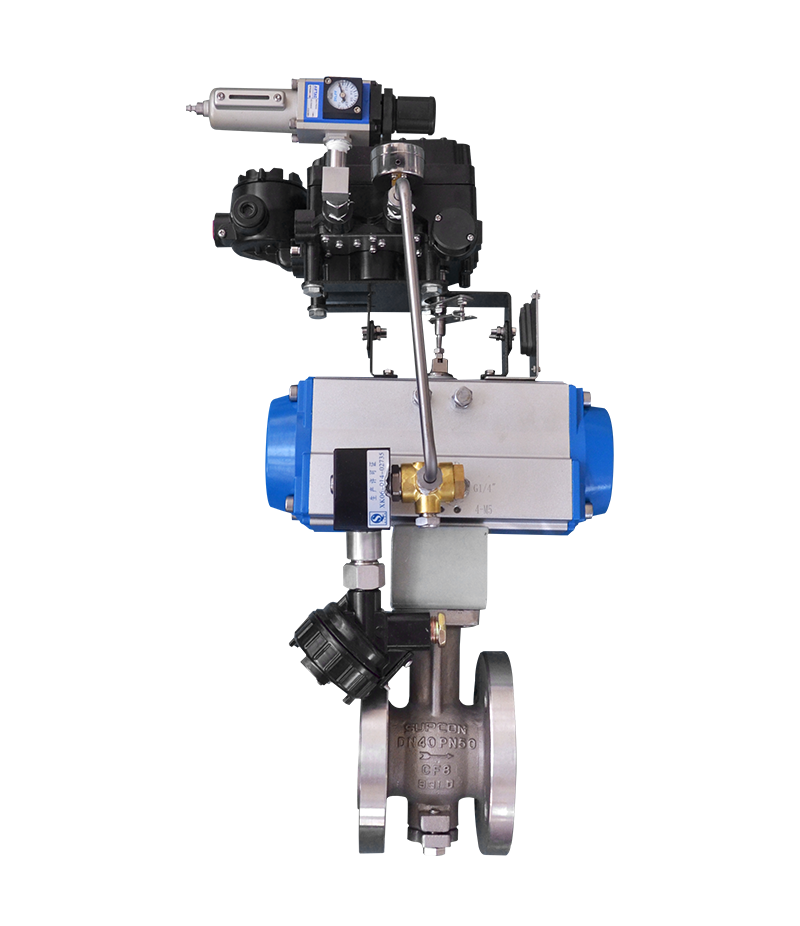Dec. 30, 2019
Globe control valve was introduced in the 1950s. With the rapid development of science and technology, the continuous improvement of production technology and product structure, it has rapidly developed into a major valve in just 50 years. In the developed western countries, the use of ball valves is increasing year by year.
The ball valve is mainly used to cut, distribute and change the flow direction of the medium in the pipeline. It only needs to be rotated by 90 degrees and closed with a small torque. Ball valves are most suitable for use as on / off valves.
Because ball valves usually use rubber, nylon, and Teflon as the seat seal material, its use temperature is limited by the seat seal material. The cut-off effect of the ball valve is completed by the metal ball pressed against the plastic valve seat under the action of the medium (floating ball ball valve). Under certain contact pressure of the valve seat seal, elastic and plastic deformation occurs in some areas. This deformation can compensate the manufacturing precision and surface roughness of the ball, and ensure the sealing performance of the ball valve.
And because the valve seat sealing ring of the ball valve is usually made of plastic, in the selection of the structure and performance of the ball valve, we must consider the fire resistance and fire resistance of the ball valve, especially in the petroleum, chemical, metallurgical and other sectors, in flammable and explosive media In the equipment and piping systems, ball valves should be used, and more attention should be paid to fire resistance and fire prevention.

V Shaped Ball Valves
Classification of ball valves:
Ball valves are divided into: floating ball valves, fixed ball valves, orbit ball valves, v shaped ball valves, three-way ball valves, stainless steel ball valves, floating ball valves, cast steel ball valves, forged steel ball valves, ash discharge ball valves, sulfur-resistant Ball valve, ferrule ball valve, welding ball valve.
In addition, according to different functions and transmission forms, it can be classified as follows:
Ball valve features:
1. Has the lowest flow resistance (actually zero).
2. It will not jam when working without lubricant, so it can be reliably used in corrosive media and low boiling point liquids.
3. 100% sealing can be achieved in a large range of pressure and temperature.
4. Ultra-fast opening and closing can be realized, and the opening and closing time of some structures is only 0.05 ~ 0.1s to ensure that it can be used in the automation system of the test bench. When opening and closing the valve quickly, the operation is shock-free.
5. Ball-type closure can be positioned automatically in position.
6. The working medium is reliably sealed on both sides.
7. When fully open and fully closed, the sealing surface of the ball and valve seat is isolated from the medium, so the medium passing through the valve at high speed will not cause erosion of the sealing surface.
8. Compact structure and light weight, it can be considered as the most reasonable valve structure suitable for low temperature medium system.
9. The valve body is symmetrical, especially when welding the valve body structure, it can well withstand the stress from the pipeline.
10. The closing part can withstand the high pressure difference when closing.
11. The fully welded ball valve can be directly buried in the ground, so that the internal parts of the valve are not eroded, and the maximum service life is 30 years. It is the most ideal valve for oil and gas pipelines.
We are ball valve manufacturer. If you have any requirements for our products, please feel free to contact us.
Headquarter Add.: SUPCON Park, No.309 Liuhe Road, Binjiang District, Hangzhou, 310053, China.
Tel.: +86 571 8111 9774
Fax: +86 571 8111 9737
E-mail: [email protected]
